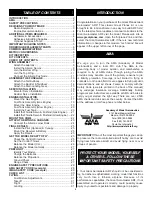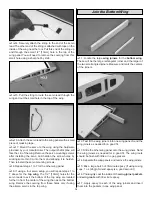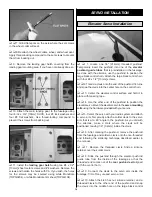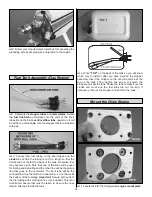
❏ ❏
5. Using the pushrod as a guide, position a large black
control horn in line with the pushrod. Align the holes in the
control horn with the hinge line as shown in the above sketch.
❏ ❏
6. Attach the control horn to the aileron using four #4
x 1/2" [13mm] sheet metal screws. Remove the screws and
harden the holes with CA. Reattach the control horns.
❏ ❏
7. Attach one 4-40 solder clevis to the middle hole on
the control horn. Use a piece of masking tape to hold the
aileron at neutral. Align the pushrod as shown and mark
where the clevis will be positioned.
❏ ❏
8. Trim the pushrod so that 1/8" [3.2mm] extends into
the clevis when the clevis is positioned at the mark made in
step 7.
❏ ❏
9. Solder the clevis onto the pushrod using the
following
Expert Tip.
E. This is what a properly soldered clevis looks like; shiny
solder with good flow, no blobs, flux removed.
C. Simultaneously heat the clevis and pushrod. Apply
Silver Solder (GPMR8070) to the joint. The heat of the
parts being soldered should melt the solder, thus allowing
it to flow.
D. Immediately after the solder has solidified, but while it
is still hot, carefully use a cloth to quickly wipe off the flux
before it hardens. Important: After the joint cools, coat
with oil to prevent rust. Note: Do not use the acid flux that
comes with the Silver Solder for electrical soldering.
B. Apply a few drops of soldering flux to the end of the
pushrod. Position the clevis so that 1/8" [3.2mm] of the
pushrod protrudes into the open area of the clevis.
HOW TO SOLDER
A. Use denatured alcohol or other solvent to thoroughly
clean the pushrod. Use coarse sandpaper to roughen the
end of the pushrod where it is to be soldered.
12













































